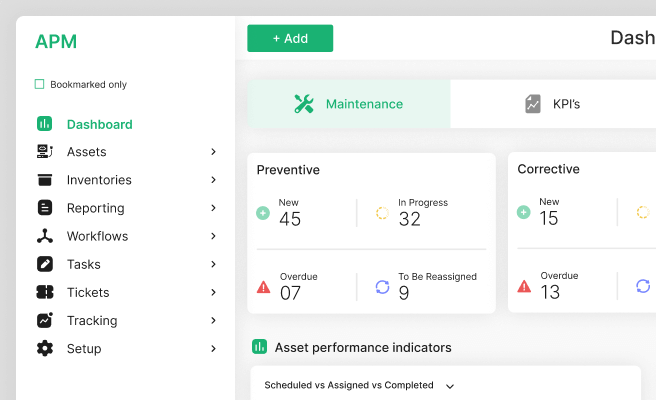Error Rate
<p><strong>Error rate</strong> is a critical metric in various industries, particularly in software development, manufacturing, and quality assurance. It refers to the frequency of errors or defects in a given process, system, or product. In simpler terms, it's the ratio of the number of errors to the total number of opportunities for those errors to occur. Understanding and managing error rates is vital for maintaining high-quality standards and ensuring customer satisfaction.</p>
<p>Error rates have been a concern since the early days of industrial production. Over time, methodologies such as Six Sigma and Total Quality Management (TQM) have emerged, focusing on reducing error rates and enhancing overall quality. In today's highly competitive market, keeping error rates low is essential for businesses to remain efficient and profitable.</p>
<h2>Importance of Error Rate</h2>
<p>Managing error rates is crucial for several reasons. High error rates can lead to increased costs due to rework, wasted materials, and lost productivity. Moreover, errors can damage a company's reputation, leading to customer dissatisfaction and loss of business. By monitoring and reducing error rates, companies can improve their operational efficiency, reduce costs, and enhance their brand image.</p>
<h3>Components of Error Rate</h3>
<p>Error rate can be broken down into several components, depending on the industry and context. Common components include:</p>
<ul>
<li><strong>Defect Rate:</strong> The frequency of defects in a product or process.</li>
<li><strong>Failure Rate:</strong> The rate at which a system or component fails to perform its intended function.</li>
<li><strong>Bug Rate:</strong> The number of software bugs or issues identified in a software application.</li>
</ul>
<p>In climate tech industries, for example, monitoring the defect rate in a carbon capture system is crucial to ensure its efficiency and effectiveness.</p>
<h3>Types of Error Rates</h3>
<p>Different industries may focus on various types of error rates. Some common types include:</p>
<ul>
<li><strong>Manufacturing Error Rate:</strong> The frequency of errors in the production process, such as defective products or assembly line mistakes.</li>
<li><strong>Software Error Rate:</strong> The number of bugs or issues in a software application, which can affect user experience and functionality.</li>
<li><strong>Service Error Rate:</strong> The rate of errors in service delivery, such as incorrect billing or poor customer service interactions.</li>
</ul>
<h2>Benefits of Reducing Error Rates</h2>
<p>Reducing error rates offers numerous benefits for businesses, including:</p>
<ul>
<li><strong>Cost Savings:</strong> Lower error rates mean fewer resources spent on rework, waste, and correcting mistakes.</li>
<li><strong>Improved Quality:</strong> Higher quality products and services lead to increased customer satisfaction and loyalty.</li>
<li><strong>Enhanced Reputation:</strong> Companies known for their high-quality standards are more likely to attract and retain customers.</li>
</ul>
<p>For instance, a climate tech company specializing in sustainable agricultural practices can benefit from reduced error rates by ensuring their technologies are reliable and effective, leading to better crop yields and lower environmental impact.</p>
<h3>Challenges in Reducing Error Rates</h3>
<p>Despite the benefits, reducing error rates can be challenging. Common hurdles include:</p>
<ul>
<li><strong>Complex Processes:</strong> Industries with intricate processes may find it difficult to identify and eliminate sources of errors.</li>
<li><strong>Human Factors:</strong> Human error is a significant contributor to overall error rates, and addressing it can be challenging.</li>
<li><strong>Resource Constraints:</strong> Limited resources for quality assurance and process improvement initiatives can hinder efforts to reduce error rates.</li>
</ul>
<h3>Strategies for Reducing Error Rates</h3>
<p>There are several effective strategies to manage and reduce error rates:</p>
<p><strong>Implementing Quality Assurance Programs:</strong> Adopting comprehensive quality assurance programs such as Six Sigma or TQM helps identify and address sources of errors systematically. For example, climate tech companies can use <a href="https://www.isixsigma.com/new-to-six-sigma/getting-started/what-six-sigma/">Six Sigma methodologies</a> to improve their processes and reduce defects.</p>
<p><strong>Training and Development:</strong> Investing in employee training and development can help reduce human error by ensuring that staff are well-equipped to perform their tasks accurately.</p>
<p><strong>Automation and Technology:</strong> Leveraging automation and advanced technologies can help minimize errors by reducing the reliance on manual processes. For instance, using <a href="https://www.ge.com/digital/industrial-internet">Industrial Internet of Things (IIoT) technologies</a> can enhance accuracy and efficiency in manufacturing processes.</p>
<p><strong>Continuous Improvement:</strong> Adopting a culture of continuous improvement encourages ongoing efforts to identify and address errors. This can be achieved through regular process reviews, feedback loops, and performance monitoring.</p>
<h2>Conclusion</h2>
<p>Managing and reducing error rates is crucial for maintaining high-quality standards and ensuring customer satisfaction. By understanding the different components and types of error rates, businesses can implement effective strategies to minimize errors and improve overall performance. For companies in the climate tech sector, reducing error rates can lead to more reliable and impactful solutions, contributing to their sustainability goals and enhancing their market position.</p> <p>To understand the power of design across industries and sectors, view our diverse portfolio of works. <a href="https://www.whatifdesign.co/work" style="color:#2896FF; text-decoration:underline;">View our portfolio</a>.</p> <p>Increase user engagement that converts your demos into sales. Optimise your UX strategies with our audits.
<p>Fill out the <a href="https://tally.so/r/n97pxQ" style="color:#2896FF; text-decoration:underline;">UX Audit form</a> to get started. Ready to discuss your needs? <a href="https://cal.com/akhilak/what-if-design?duration=25" style="color:#2896FF; text-decoration:underline;">Book a consultation call</a> with us today.</p></p>

Let's scale your impact with great design.
Free consultation, no sales pitch
Thank you! Your submission has been received!
Oops! Something went wrong while submitting the form.
Let’s talk
Nothing great is built alone.
Let’s connect about your vision, our work and how we can collaborate.
Get in touch

